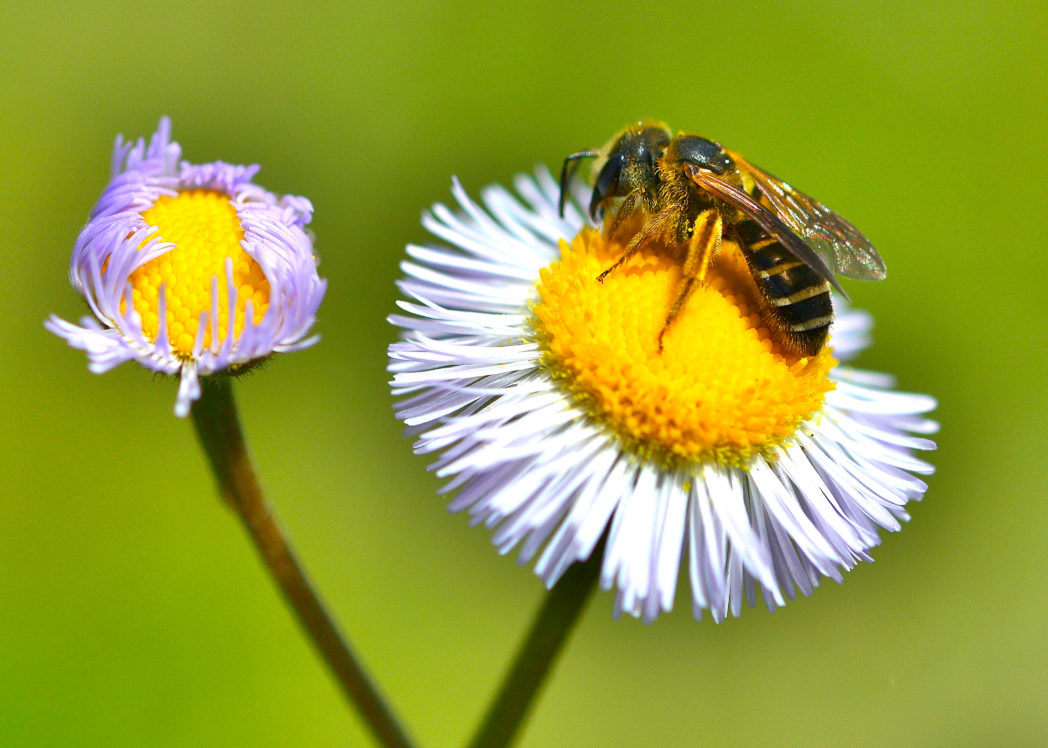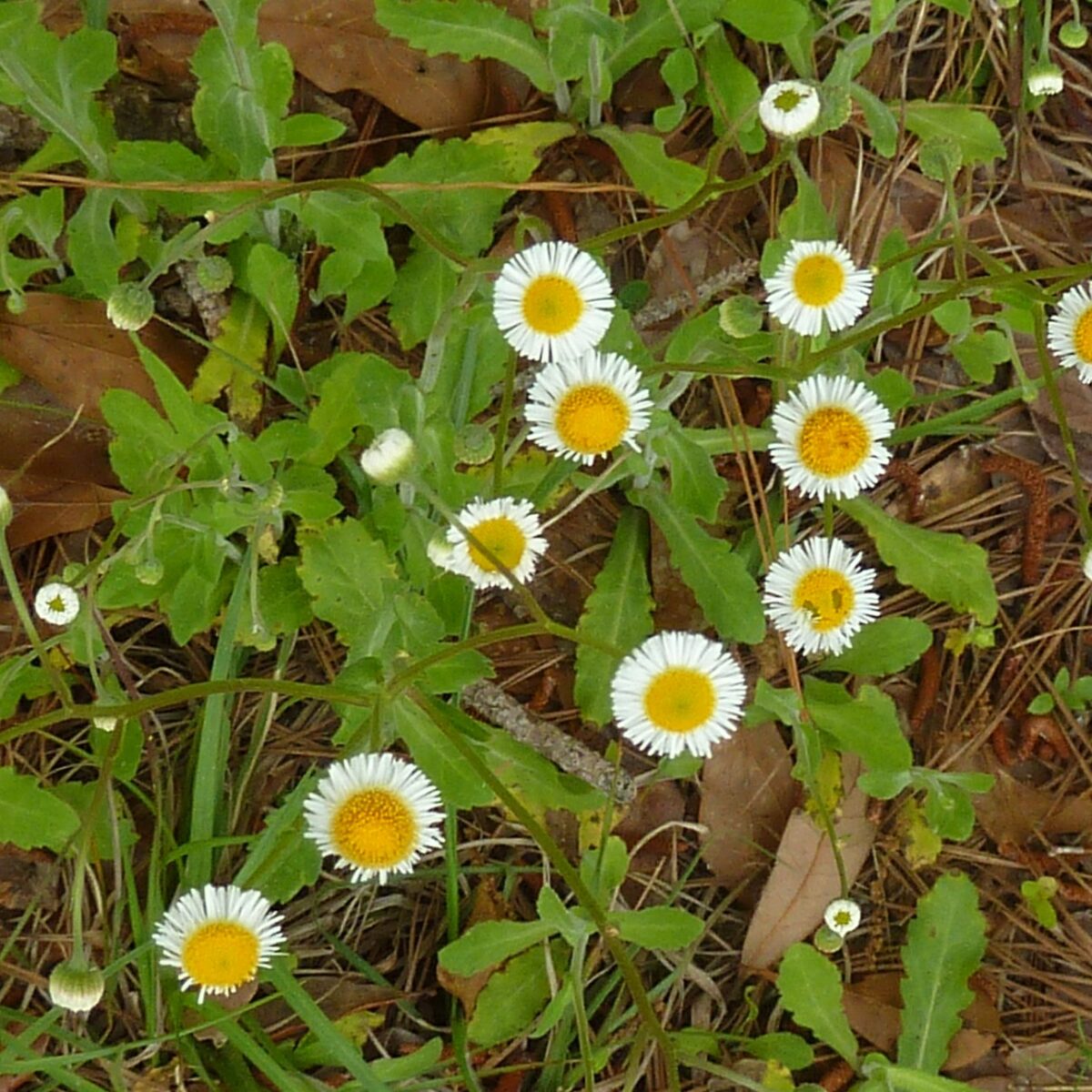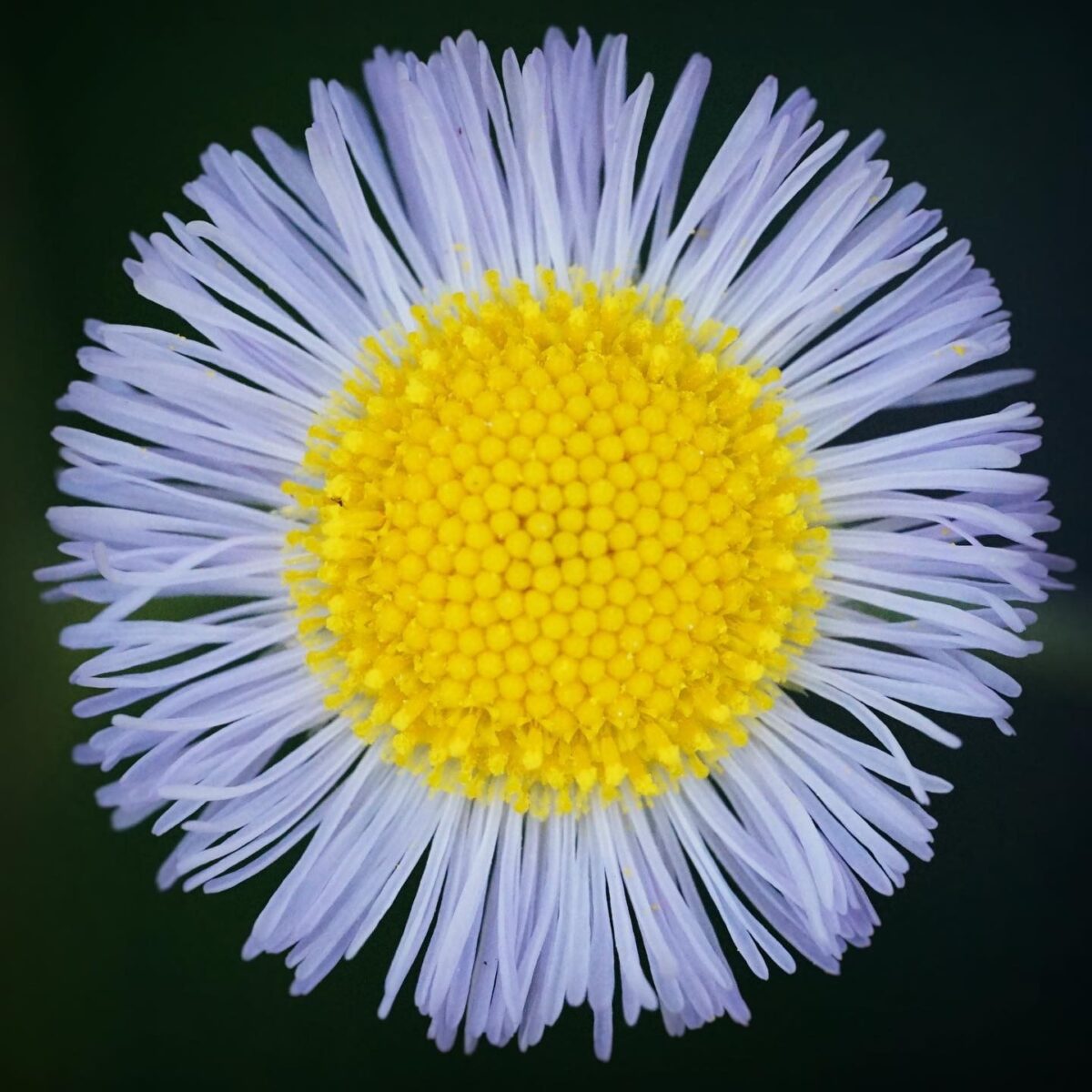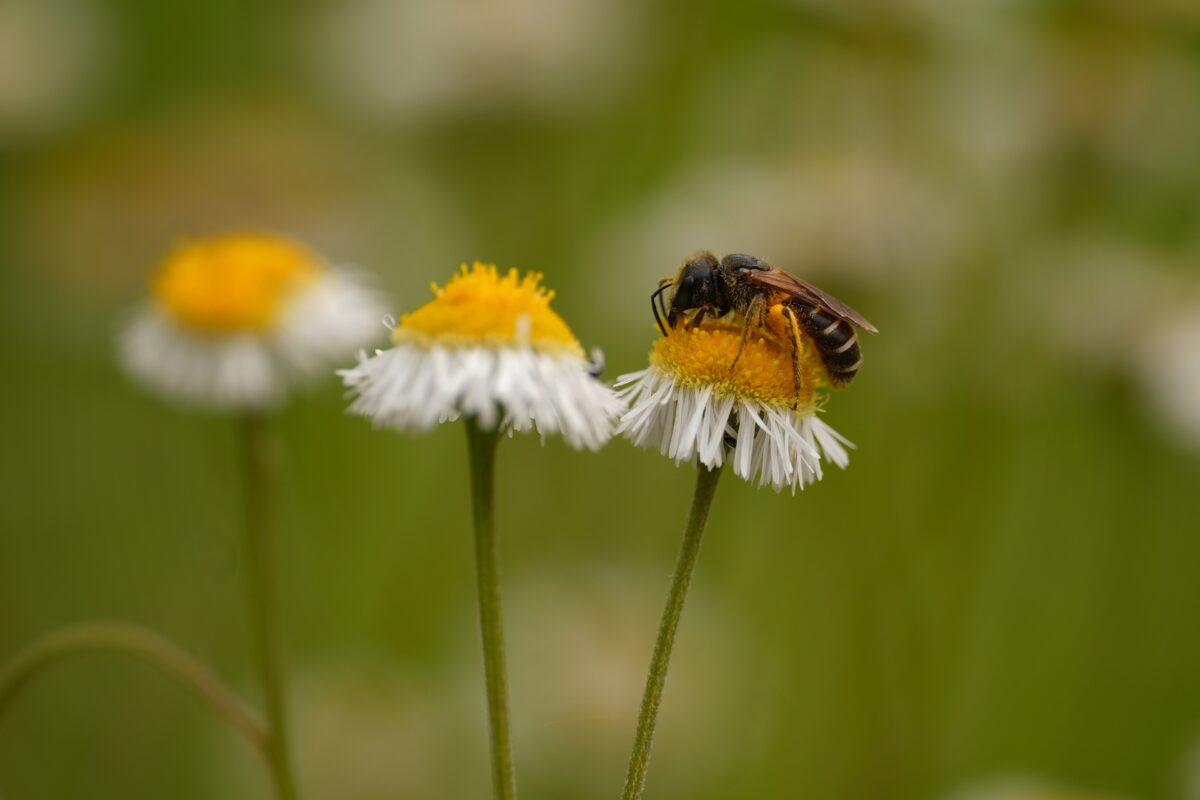Oakleaf fleabane
Pictured above: Oakleaf fleabane (Erigeron quercifolius) by Lisa Ludlum. Click on terms for botanical definitions. View post as a PDF.
Also known as Southern fleabane and Daisy fleabane, Oakleaf fleabane (Erigeron quercifolius) is a delicate, short-lived perennial wildflower. Its small blooms (about 1/4-1/2” in diameter) consist of many thin, white to pinkish-purplish ray florets surrounding a broad, dense cluster of yellow disk florets. Its leaves are mostly basal and are lobed, resembling the leaf shape of some oak species (hence the common name “Oakleaf fleabane,” and the scientific name quercifolius, which is Latin for “oak-like foliage”; Quercus is a genus of oaks). The leaves and stems are covered in tiny, fine hairs.
Oakleaf fleabane typically flowers in spring and summer. It occurs naturally in sandhills and moist hammocks as well as in disturbed sites and along roadsides. A variety of pollinators are attracted to its blooms.
Family: Asteraceae (Aster, composite or daisy family)
Native range: Nearly throughout, from Central Panhandle to the Keys
To see where natural populations of Oakleaf fleabane have been vouchered, visit florida.plantatlas.usf.edu.
Lifespan: Short-lived perennial
Soil: Dry, sandy soils to moist soils
Exposure: Full sun to moderate shade
Growth habit: 12–24”
Propagation: Seed
Florida regions of landscape suitability: North, Central, South
Garden tips: Oakleaf fleabane is best utilized in a meadow or naturalistic setting. It is easily propagated by seed. It does have a tendency to get weedy if left to its own devices.
Oakleaf fleabane is occasionally available at nurseries that specialize in Florida native plants. Visit PlantRealFlorida.org to find a nursery in your area.
Learn more about Oakleaf fleabane from the Florida Native Plant Society and the Institute for Regional Conservation.
For more information on other Erigeron species, see these resources:




